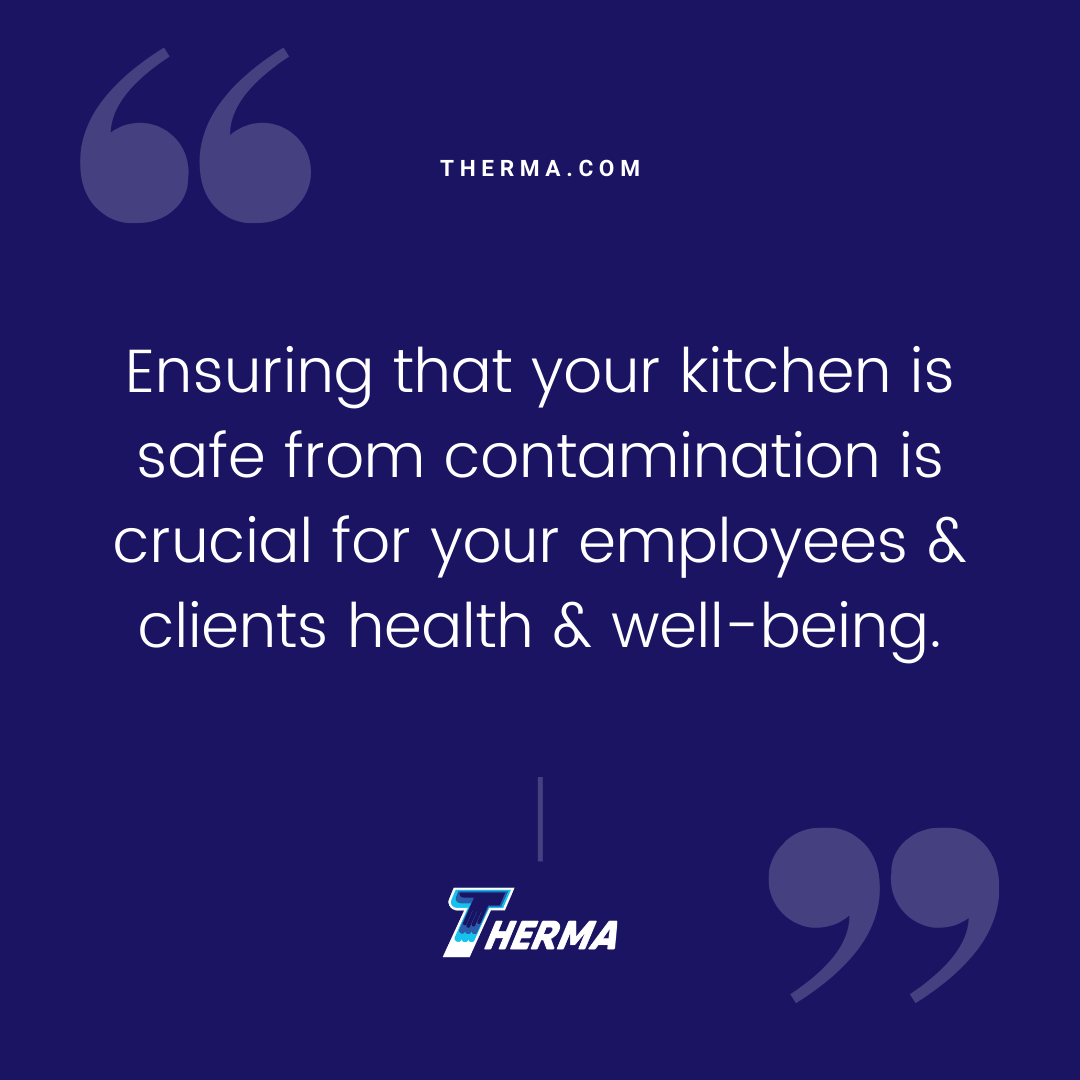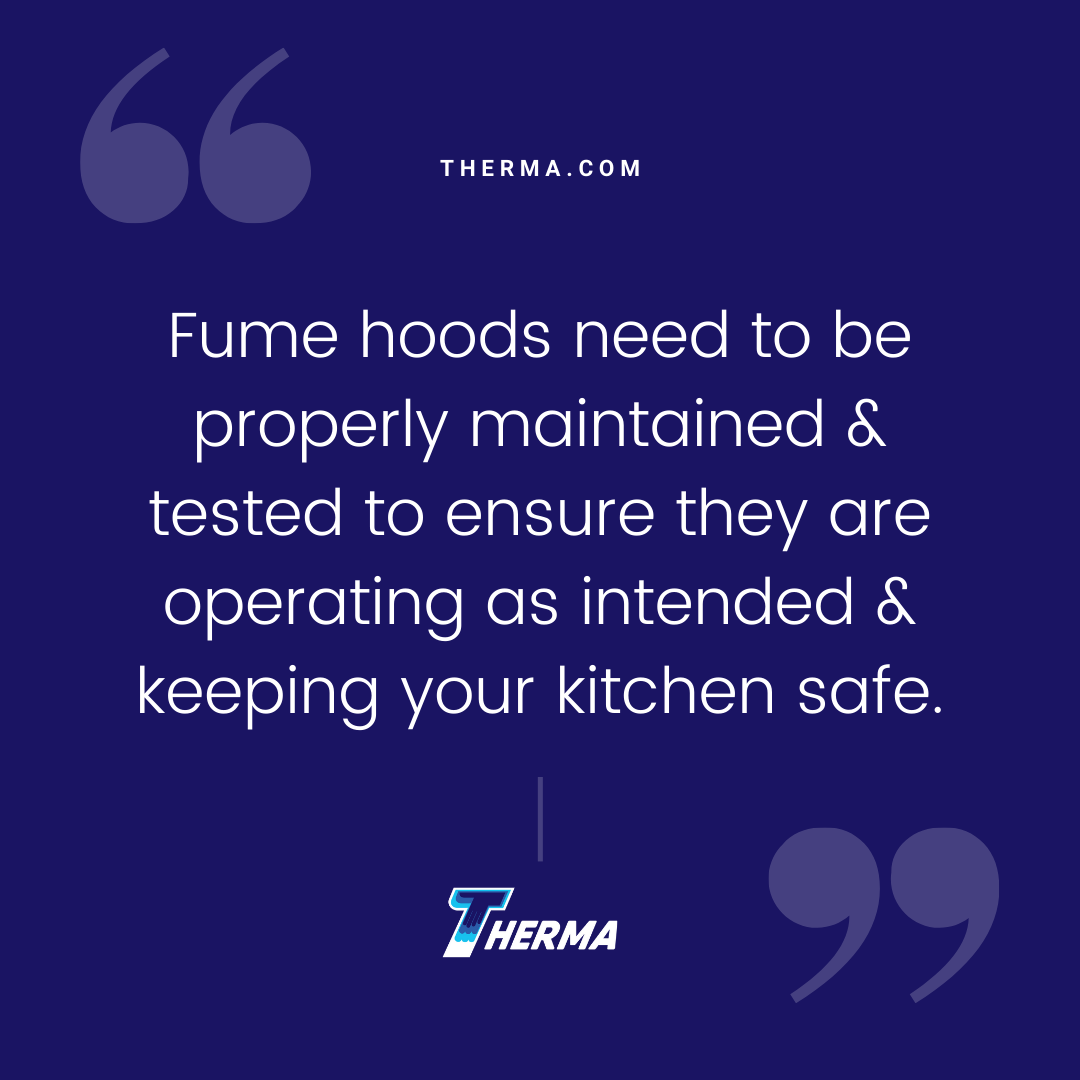by Ali Kriscenski
While kitchen facilities serve a variety of different audiences, the foundations of food safety are consistent throughout the industry. Proper training is a key element, as are the equipment and environmental controls that help prevent food contamination and allow kitchens to perform at high levels of efficiency. Here’s a look at the fundamental conditions that make your kitchen safe.
Causes of Food Contamination
There are several main types of food contamination, including chemical, microbial, physical, and allergenic. The causes of contamination range from foreign objects to microorganisms, including bacteria.
Chemical contamination occurs when substances intended for non-food prep uses, such as maintenance or cleaning, come into contact with food. Improper handling or storage can create the potential for food to become contaminated by chemicals used for cleaning, first aid, or even pest control.
This type of contamination can be especially dangerous as certain chemicals can be poisonous when ingested. Preventing chemical contamination can be accomplished by storing food and chemicals properly, and in separate areas. Ensuring proper use of chemicals will also help with prevention. Another key component is to have properly sized and functioning HVAC equipment, such as fume hoods.

Physical contamination is when a foreign object finds its way into food. These can include jewelry or other items that a worker may wear or carry. Physical contaminants can also include pests or bugs, plastic or metals from food containers, or even items from building equipment or finishes, such as loose screws.
This type of contamination can pose an immediate risk as the foreign object could potentially be a choking hazard. Preventing physical contamination can be done by maintaining equipment and food storage and prep areas. A stringent dress code and PPE training can help staff maintain hygienic food prep. Another preventative measure is to have a pest control strategy in place that helps protect food from bugs and rodents.
Temperature and Humidity Control
As active and dynamic environments, kitchen conditions may seem hard to control. Staff training on hygiene and food handling are a primary step in managing food and environmental safety. However, even the best-trained staff needs the right conditions to succeed.
Bacteria and viruses are the most common causes of food poisoning and they thrive in conditions that feed their requirements. Temperature and humidity controls that manage changing environmental conditions can establish a baseline for keeping contaminants in check.
Ventilation Requirements and Equipment
Commercial kitchens benefit from the installation of fume hoods to help quickly remove fumes, vapors, or particles from an area and limit contaminant exposure. Fume hoods can help contain contaminants from polluting food storage areas and remove them from the building before contamination occurs. Ventilation with a commercial fume hood can also help control heat and moisture that may be released from cooking or appliances.
While extremely useful, fume hoods need to be properly maintained and tested to ensure they are operating as intended and keeping your kitchen safe. If not working properly, a fume hood could allow heat or fumes to escape into the kitchen facility. They also need to be balanced to ensure that the air within a facility does not create a negative pressure situation where contaminants are drawn into the area through open doors or windows.

Equipment Maintenance Recommendations
Fume hoods should be tested at least once a year to ensure they are in good working order and not creating a potential source of contamination. The purpose of testing is to check whether the hood is capturing heat, steam, vapors, smoke, etc and removing them effectively. This type of testing can be done by owners, but the engagement of an HVAC professional trained in equipment types and performance levels is a wise investment.
Avoiding Food and Beverage Contamination
Ensuring that your kitchen is safe from contamination is crucial for your employees and clients health and well-being. Connect with Therma, your fume hood testing expert.
Ali Kriscenski was trained in high-performance building design at Boston Architectural College. She has worked with leading architecture and construction firms in NYC and New England, and served on the executive team at Forest Stewardship Council International. She was Managing Editor at Inhabitat and has worked pro bono for the Green Building Institute, ISEAL Alliance, and Habitat for Humanity.







